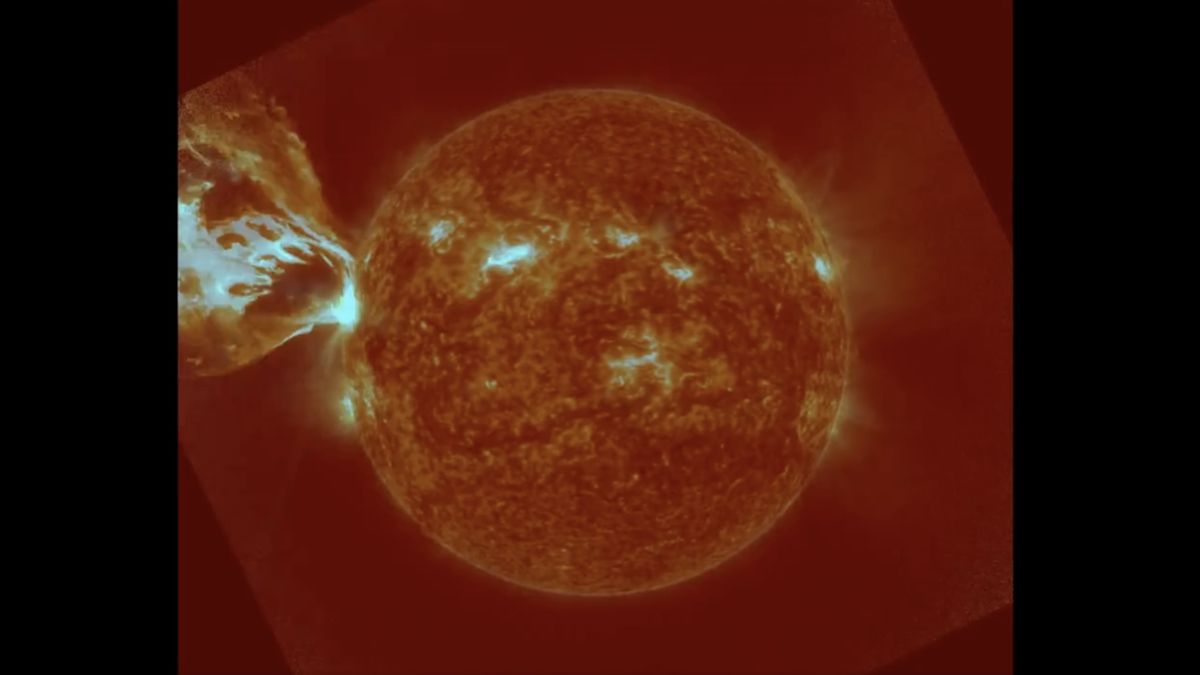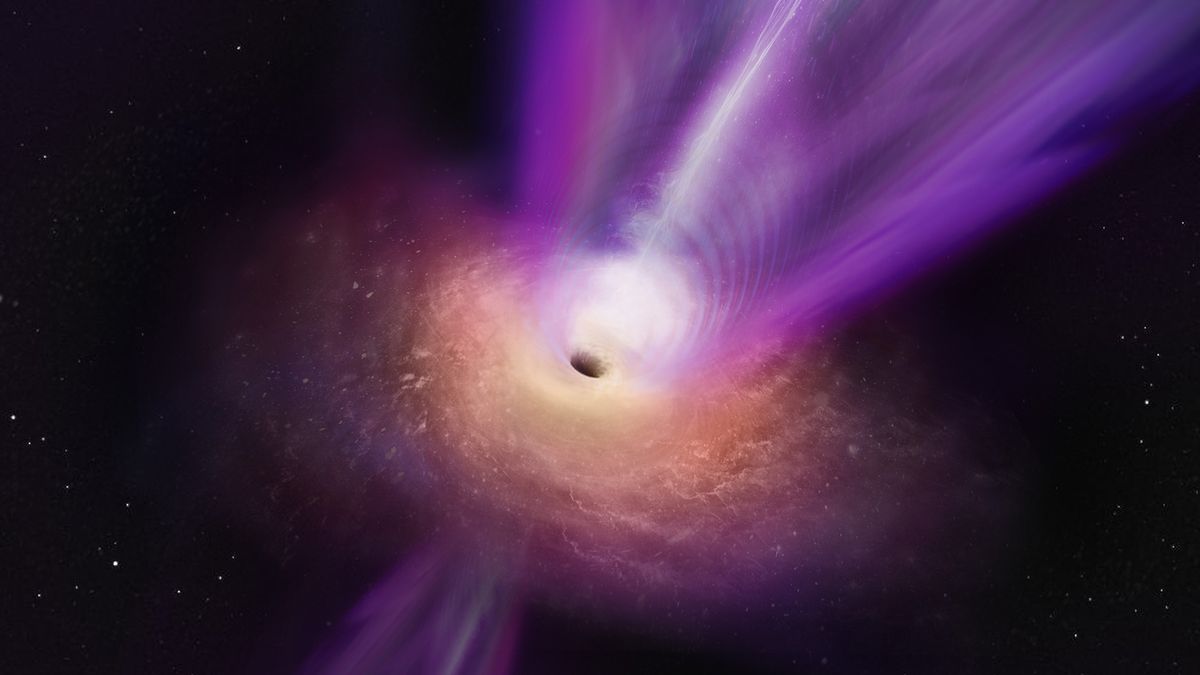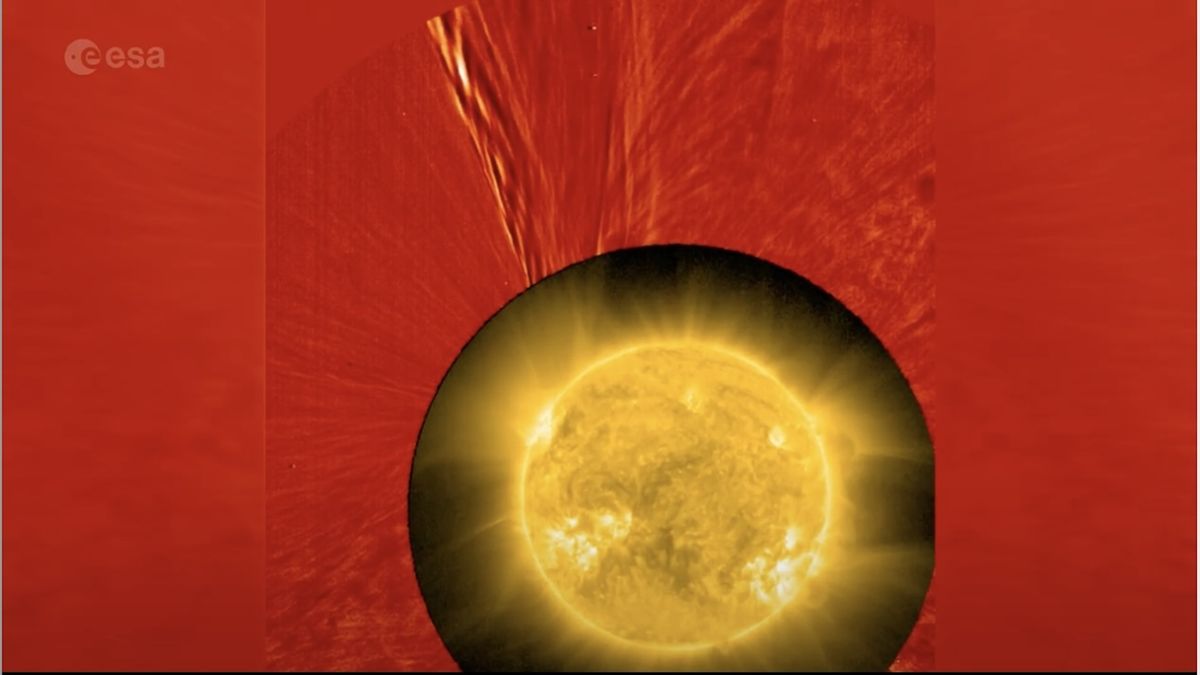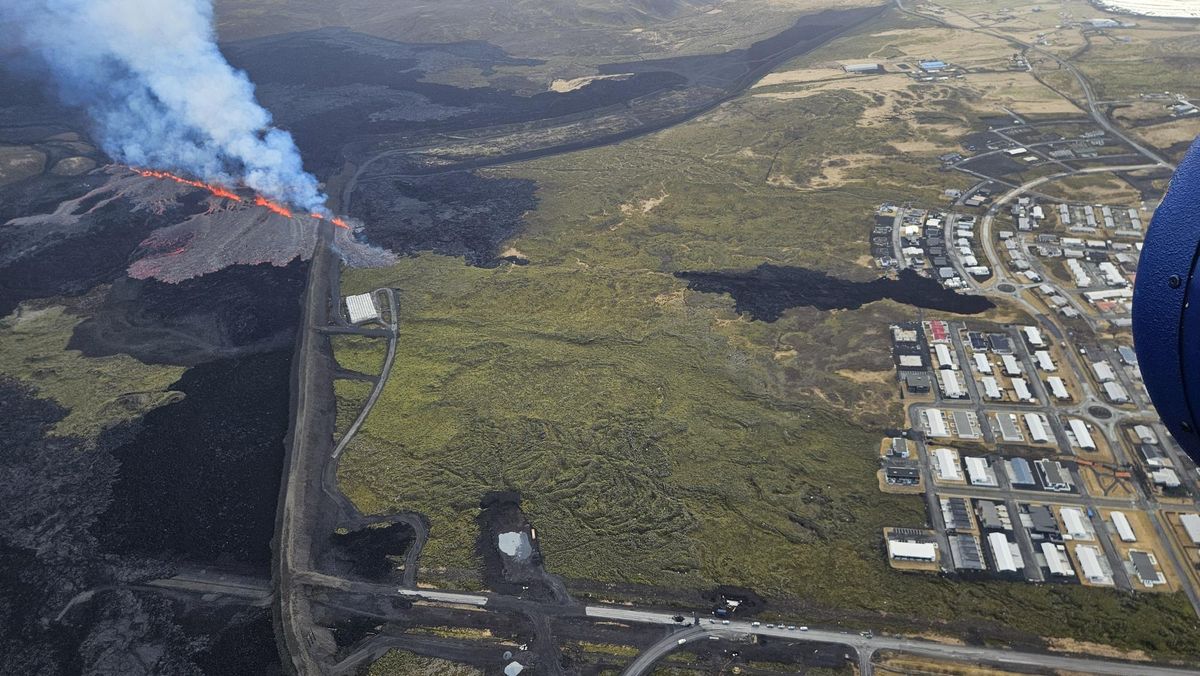Scientists caught a massive and extremely powerful X-class solar flare being spat out from the sun on Friday (March 28), just before the stellar eruption triggered a radio blackout across two continents.
A video captured by the GOES-16 satellite, which is jointly operated by NASA and the National Oceanic and Atmospheric Administration (NOAA), shows the X-class solar flare bursting forth from a sunspot on the sun’s surface at around 11:20 a.m. EST on March 28.
This X1.1-class solar flare, which was released from a sunspot named AR4046, marks the first X-class flare the sun has released since early February.
“A strong solar flare (R3) occurred and peaked at X1.1 near 11:20am EDT (1520 UTC) on 28 March, 2025. The flare occurred from the vicinity of newly rotated into view Region 4046 near the east limb,” NOAA’s Space Weather Prediction Center said in a statement after the flare.
Related: Our sun may be overdue for a ‘superflare’ stronger than billions of atomic bombs, new research warns
NOAA’s Space Weather Prediction Center shared the spectacular video on X, formerly known as Twitter, showing the solar flare erupting from the sun alongside a cloud of solar material known as a coronal mass ejection (CME). CMEs are massive bursts of plasma and magnetic field from the sun that are ejected into space, usually during solar flares. These fast-moving blobs of plasma can cause serious disturbances to satellites and power grids if Earth happens to be in their path.
Dangerous flare-ups
Solar flares are intense bursts of electromagnetic radiation that erupt from the sun’s surface, usually from magnetically active regions like sunspots. When the sun’s magnetic fields tangle, break, and reconnect, massive amounts of energy are released in the form of light, heat, and charged particles. Solar flares are classified on a scale of A, B, C, M, and X. Each class is 10 times more powerful than the last, with X-class flares being the most powerful and least frequent.
Related: X-class solar flares hit a new record in 2024 and could spike further this year — but the sun isn’t entirely to blame, experts say
When the radiation from a solar flare is aimed toward Earth, it can cause radio blackouts across the side of the planet facing the sun. This occurs because the solar flare’s intense X-rays and extreme ultraviolet radiation ionize Earth’s upper atmosphere, specifically the ionosphere, which is situated between 30 miles (48 km) and 600 miles (965 km) above Earth’s surface.
The ionosphere consists of several layers that reflect and refract radio waves, allowing high-frequency radio signals to travel long distances around the world. When solar flares ionize the D-layer, which is the lowest part of the ionosphere, this causes radio waves to be absorbed instead of being reflected, and leads to signal degradation or complete loss of high-frequency radio communications in the affected area.
A view of today’s X1 (R3) flare in GOES-16 imagery at the 304A wavelength (courtesy of jhelioviewer) shows the blast of solar material associated with the flare. The CME is likely directed not Earth-directed; however analyses continues to be sure of no flanking influences. pic.twitter.com/xggvYz3Pb0March 28, 2025
This March 28 solar flare caused a radio blackout across North and South America and the Atlantic on Friday morning.
“Immediate, wider area of strong degradation or signal loss in high frequency (HF) communication bands over much of the sunlit side of Earth; users of HF radio signals may experience loss of contact or major disruptions for a number of minutes to a couple of hours in the affected areas,” NOAA’s Space Weather Prediction Center said in the statement.
When this solar flare was released, a CME followed shortly after.
CMEs usually arrive at the Earth several days after a solar flare, and can trigger geomagnetic storms if they collide with the Earth’s magnetic field, resulting in the appearance of the aurora. CMEs can also knock satellites out of the sky, tamper with GPS-based equipment on Earth, and trigger widespread power outages in really severe cases.
Luckily, the newly-launched CME is not expected to hit our planet, so no geomagnetic storms are expected in the coming days.
“The CME is likely … not Earth-directed; however analyses continues to be sure of no flanking influences,” NOAA’s Space Weather Prediction Center said in the caption of the X post.
The sunspot that caused the flare and the CME (AR4046) is moving around the sun to face our planet, meaning that if it releases any more flares or CMEs, they will likely hit the Earth head-on.
“The flare source region will rotate to face Earth in the coming week. Further strong solar activity is likely!” solar astrophysicist Ryan French wrote in a post on X.
Additionally, a new sunspot named AR4048 is also turning toward Earth, and is expected to churn out some powerful flares and CMEs in the coming days. According to a Space Weather Prediction Center Forecast Discussion, there is an overall 15% chance of another X-class flare occurring between March 31 and April 2, “primarily due to AR 4048”.














